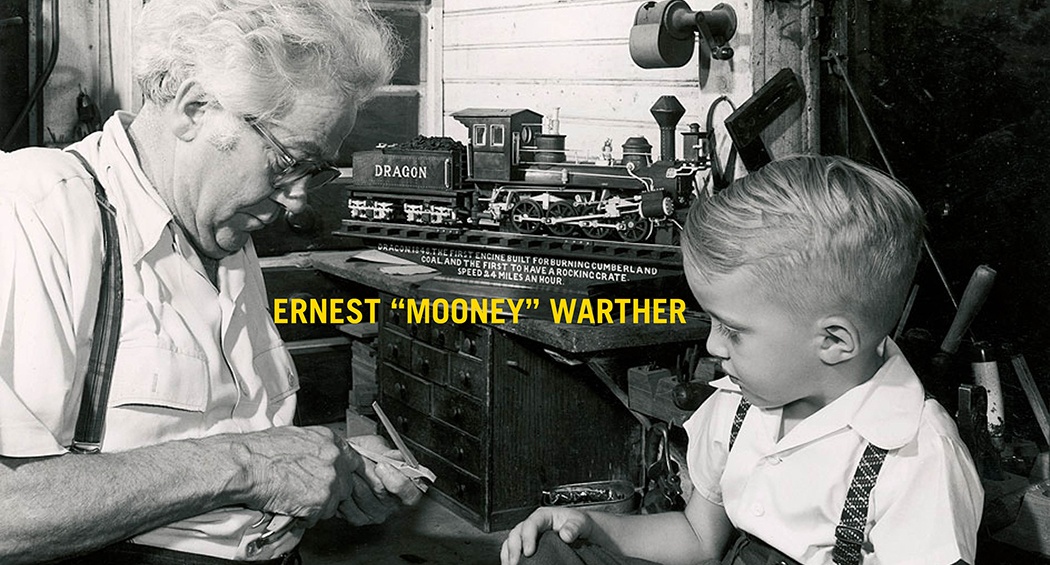Five Childhood Memories that Inspire Five Brand Marketing Insights
October 21, 2016 at 5:01 PM

There's something very comforting about being over 50 and recognizing that who you are and what you do are built upon a foundation of strong childhood memories that have synthesized into adulthood. Childhood experiences can be both fascinating and scary, but they are precious especially if sharing them awakens similar memories in others and provides long lasting and implementable lessons for work and life.
Childhood memories have lasting impact, like the recollection of a momentous news event, or the reminiscence of laying on the grass in the backyard looking at the clouds without a worry in the world, or your first big fight with a friend because she cast you as the witch in the backyard play.
These early experiences tested our intrinsic nature and built character. Like all people, I have inborn character tendencies. I always loved a big idea, was passionate about making things, and loved to organize. Plus, coming from a family of six girls, I definitely have a competitive spirit!
These qualities form the elemental reasons why I love the process of design. "Design thinking" is the synthesis of ideas and planning. We use words and pictures to articulate design ideas which are manifest in your brand. And developing that brand means understanding the basic essence of what an organization or product is and staying true to it. Taking the time to plan big ideas and synthesize time, talent, and resources, will lead to better results for your organization.
Photo by NASA (CC by 2.0)
Memory #1: "Astronauts Land On Plain; Collect Rocks, Plant Flag...10-Year-Old Girl Receives Commemorative Snoopy Doll from Her Father, a NASA Engineer."
On July 21, 1969, The first men to reach the moon Neil Armstrong and his co-pilot, Col. Edwin E. Aldrin, Jr. of the Air Force brought their ship to rest on a level, rock-strewn plain near the southwestern shore of the arid Sea of Tranquility. We watched on our tiny black & white TV as we heard the announcement, "Houston, Tranquility Base here. The Eagle has landed." About six and a half hours later, Mr. Armstrong opened the landing craft's hatch, stepped slowly down the ladder and declared as he planted the first human footprint on the lunar crust: "That's one small step for man, one giant leap for mankind."
This was my first memory of something really, really big. We had been talking about nothing else for weeks as the excitement mounted in our family and our community of friends especially those who also worked at NASA.
I was the lucky daughter of the six girls because my father gave me the commemorative Snoopy doll each NASA employee received because the landing was near my birthday (and in my mind, I was the favorite daughter, after all).
Years later, while studying design at the School of the Art Institute of Chicago, I was introduced to the great architect Daniel Burnham. Burnham is known as the creator of many master plans for great cities, including Chicago and downtown Washington, D.C., as well as many of our well-known skyscrapers including Chicago's Masonic Temple Building, considered to be the first skyscraper. Burnham is famously quoted as saying, "Make no little plans. They have no magic to stir men's blood and probably will not themselves be realized."
I love to think big. I live to devise the project that seemingly can't be done. Persistence and process pay off if you start out with a big plan and use a strategic process you get big results.
Insight # 1: Think big. Dream huge. Don't compromise.

Memory #2: Our family visits the Warther Museum and I watch 86-year-old Ernest "Mooney" Warther carve working pliers out of a single piece of wood.
Ernest "Mooney" Warther was a master carver and created 64 scaled, working wooden model steam engines. He tells a story of meeting a hobo on the train tracks when he was just a boy who showed him how to carve a pair of pliers out of a solid piece of wood using only 10 cuts. Mooney was a fast learner. He improved his technique and would carve each handle into two more sets for a total of three. Then he would carve each of those four handles into two more each for a total of seven sets, all branching from the first. In his twenties he carried this to an unbelievable level and created a "tree" of pliers which took 31,000 cuts and over two months to complete. It was displayed at the Century of Progress International Exposition, known as the Chicago World's Fair, in 1933. Professors at Case University studied the plier tree and declared that one would have to have an advanced mathematical education to be able to design a block of wood of the correct shape to begin such a project. Mooney replied that he was glad he was told this after he made the tree and not before.
The methodology commonly referred to as design thinking is a proven and repeatable problem-solving protocol that any business or profession can employ to achieve extraordinary results. Like Mooney, who worked hard over time to perfect his carving and mastery of the magic pliers, our design thinking is a repeatable process using creative techniques:
- DEFINE THE PROBLEM
- CREATE AND CONSIDER MANY OPTIONS
- REFINE SELECTED DIRECTIONS
- PICK THE WINNER, EXECUTE
I was 10 when we visited the Warther Museum to see the famous trains and the button and arrowhead collections. We stood around with a large group of people watching the then 86-year-old man work his magic. He held up the pliers and said "whoever wants this knowledge and the pliers must grab it from my hands." This was his "call-to-action." I did not hesitate. I still have that set of wooden pliers and the knowledge that almost anything is possible when armed with planning, knowledge, and skills.
Insight #2: Use design thinking to plan and strategize. Skills matter. Take immediate action with solid tactics or you will lose.

Memory #3: I take art lessons with an artist who lives on a farm.
I am 12 years old and so excited to be getting private art lessons. My first assignment is to sit on the grass and look down and draw what I see. My immediate reaction was, "Are you kidding me? Can't I draw that barn over there instead?" But after a few moments I got to work. In those blades of grass I saw more than I could have imagined. Her lesson was simple: before you learn how to draw, you learn how to see.
In retrospect, she was teaching me about the principles of art. It was all there: balance, contrast, emphasis, movement, pattern, rhythm, and unity/variety. These principles are concepts we use to organize or arrange the structural elements of design. The way in which these principles are applied affects the message or content of the design or artwork. The principles of art and design are the foundation of the language we use to talk about design and art.
Insight #3: First, learn how to see. Then, learn and apply the principles of design.

Photo by Rob Briscoe (CC by 2.0)
Memory #4: We are expecting company. My mother asks us if we can help her clean the house.
I have five sisters. I am not the oldest but I am the bossiest. When I was young I played a game to motivate my sisters to help me clean the house. It was the earliest form of Basecamp Project Management. I hid pennies everywhere. Armed with rags, Pledge, and Windex, I gathered my sisters and strategically assigned each a job (dusting, windows, floors, bathrooms). I told them there were pennies hidden all over the house. They got to keep what they find, but only after the area they were assigned to is cleaned and they find them as they are working.
Managing and synchronizing multiple resources are crucial in order to get real results. Integrated marketing synthesizes multiple strategies and tactics ranging from direct mail to inbound marketing.
Insight #4: People may need to be asked to do something but they will feel good afterwards–especially if there are rewards and incentives involved.

Memory #5: I am 14 and in training for the Junior Olympics in synchronized swimming.
Here's the thing: I love winning gold medals. Competitive synchronized swimming required lots of practice in order to win those medals. Every evening after school, and for hours on end. We practiced, built up our strength and endurance, worked on our artistry, and developed a nice sense of team spirit. However, at one synchronized swimming exhibition (and thank goodness it was not a competitive meet) while waiting in the staging area in the dark, with our music keyed up, our 12-person routine was about to enter the swimming pool area with our "deck work" (a pre-synchronized swimming deck dance). Suddenly my nose clips were missing. This was a crisis. There was no one nearby to borrow a pair of nose clips from and we are under water and upside down for long periods of time. There was absolutely no way to swim without them. So I ducked out. Just disappeared from my team routine. Imagine my teammates looking for me underwater to prepare for the next stunt, the next formation, and not being able to locate me! This was a disappointment for our show and it would have been a disaster if it had been a competition.
So, the lesson here is there are some things you can not do well with talent and experience alone you also need the right equipment. We have been working with our clients for years to develop integrated marketing strategies that bring results. One big problem: results were seldom shared with us, so we could not share return on investment (ROI) information. Eventually, we started pulling results from various sources but it took a long time to coordinate and measure.
Now, we are very happily HubSpot agency partners. This allows us to have all of our tools (email marketing automation for lead generation, landing pages, websites, blogging, social media, customer relationship management (CRM) and analytics) within one tool. The results are there, right in front of our eyes, and are available to share with clients and use for future planning to keep the results growing and improving.
Insight #5: Strategic planning, repetition, and artistry help you stand out, but to win it sometimes comes down to having the right tools!
A lofty goal is a great place to start. Knowing how to really see through extensive design education and knowledge of, and practice with, the principles of design leads to more sophisticated and "true" solutions for our branding and marketing concepts. The experience of using "design thinking" to solve business and organizational problems and make the best out of each opportunity is enhanced when we add powerful marketing and analytical tools. They make our job easier, help us build strategies based on real information and ultimately lead to the prize a gold medal developing brands that stand out with results that stand up!
Comments
Questions or comments? Join the conversation!